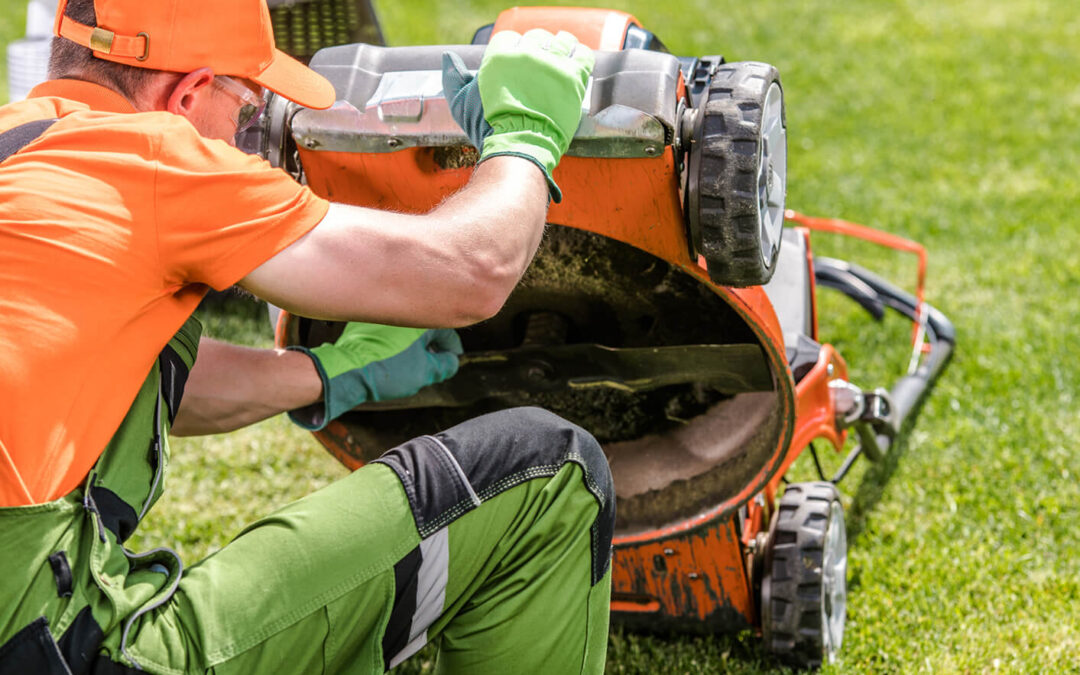Some homeowners might find it unnecessary to sharpen their lawn mower blades. However, doing this is a must if you mow your grass consistently yourself. It is recommended to sharpen the blade at least once every year to maintain a well-cut lawn.
Dull lawn mower blades can still cut grass, but they leave the grass blades jagged and notched. This kind of improper mowing only results in your grass turning brown, making it more prone to pests and disease. On the other hand, sharp mower blades cut your grass cleanly and quickly, leading to a healthy and neatly trimmed lawn.
There are three easy ways to sharpen your lawn mower blades: using a flat-file, bench grinder, or a hand drill. Listed below are the steps on how to sharpen lawn mower blades, including other essential information you need to know while you’re at it.
How to Know Your Blade Needs Sharpening
Knowing when to sharpen your blade can be confusing for most homeowners. However, here are some telltale signs that tell you that your lawn mower blade needs sharpening:
- A year has already passed since your lawnmower has been sharpened.
- Your lawn mower frays the tips of your grass blades, leaving a rough finish.
- The grass shows brown tips after a few days of mowing.
- The mowed rows of grass look uneven.
If you see these signs upon observing your lawn and your lawn mower’s performance, it means that you should do some sharpening. While once a year is usually the standard for sharpening your lawn mower blades, you may choose to do it sooner if you deal with larger debris such as pine cones or branches.
How to Sharpen Your Lawn Mower Blade
When sharpening your lawn mower blade, your aim is to make the blade as sharp as possible so that it can cut grass neatly. It doesn’t mean that you have to make it razor-sharp since its high-speed rotation is already effective enough.
Before going directly into the different methods of sharpening your blade, it’s first essential to remove your lawnmower blade first.
Step 1: Take off the Lawnmower Blade
- In this step, make sure to remove the spark plug wire to avoid the motor from starting accidentally. You can either tie it or tape it back, so it doesn’t make contact with the plug. Doing this helps prevent untoward injuries from occurring as well.
- Turn your mower onto the side to keep the gas and oil from dripping into the air filter. This helps you avoid getting a smoke cloud from oil leakage once you start the motor the next time you use it.
- Remove the lawnmower blade. Use a short 2×4 and wedge it between the deck and blade to clamp it. Afterward, loosen the nut or bolt using a wrench. Set the mower onto its wheels until you’re prepared to reinstall the blade again.
Step 2: Sharpen Your Blade
Method 1: Clamp and File technique
Using a flat file to sharpen a dull lawn mower blade is a common option that’s easy for most homeowners to perform. To do the clamp and file:
- Clamp the lawnmower blade and sharpen its cutting edge using a mill file held at a precise cutting angle.
- File the blade until it’s sharp. Using a hand file will take you about 50 strokes before achieving desired sharpness, allowing you to control the results fully. They’re also easy to handle, unlike grinders.
Method 2: Blade Sharpening Drill/Sharpening Stone
This tool works like a bench grinder but is more affordable and smaller. It gets the sharpening done much quicker and is designed to fit into your blade’s edges. Using a blade sharpening drill makes it easier for you to sharpen the blade with minimal effort with fewer mistakes at the same time.
- Place the stone into a drill. Make sure that you wear safety glasses before drilling the blade.
- Slip the sharpened over the blade’s edge, with the dull edge of the blade facing the stone’s beveled side and the flat against the rear.
- Use moderate pressure while sharpening the blade, using back and forth movements.
Method 3: Bench Grinder
A bench grinder is the fastest method of sharpening your mower blade, though you need protective equipment while doing so. Bench grinders are typically great for repairing blades that are heavily damaged with gouges or scrapes that are otherwise difficult to sharpen or smooth overusing hand files.
- Turn on your bench grinder and wait until it gets up to the required speed.
- Use an angle of 45 degrees for sharpening, and slowly grind the blade’s edge against the spinning wheel.
- This process is usually loud with many sparks all over the place, which is why you need the protective equipment.
- Sharpen using moderate pressure and continue doing so until you reach desired sharpness.
Step 3: Check for the Proper Angle of Filing
- Make sure to file in the original cutting angle’s direction.
- To do this, start sharpening from the cutting edge’s topside since it gives you a long-lasting blade edge. It’s also important to remember that you’ll usually feel the push stroke of the file cut onto the blade’s steel during sharpening. If you don’t feel this, that means your file or equipment is dull.
Step 4. Reinstall the Lawn Mower Blade
- After you have finished sharpening your blade, it’s now time for you to install it back.
- Before reinstalling it, make sure to check the balance by hanging it on a nail.
- If you observe one side of the blade dipping to the other side, file more on that side until the lawnmower blade hangs equally horizontal. Remember that an unbalanced lawn mower blade may eventually ruin the blade’s bearings or shafts due to vibration.
- Once this is done, put the blade back and screw the bolt.
- Also, place the 2×4 in, tightening the bolt securely with a breaker bar and socket. Keep in mind that tightening the bolt loosely may throw off the engine’s timing, making it difficult to start your lawnmower.
Final Word
Installing your blade is essential if you want to have a clean and neat lawn. Moreover, it also prevents jagged blade tears on your grass that can significantly promote fungal growth and weaken them simultaneously. These issues also lead to grass diseases when left unchecked.
However, using a sharp blade for lawn mowing allows your grass to recover and heal quickly from damages while making lawn cutting faster and stress-free.

